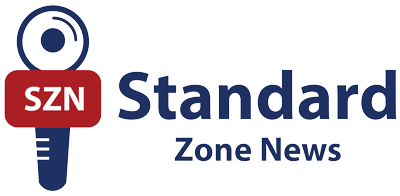
After grappling with successive years of floods, South Sudan is once again on the edge of imminent flooding, as a new seasonal weather outlook indicates a likelihood of above-normal rainfall, particularly in eastern parts of the country.
The forecast, released by the IGAD Climate Prediction and Applications Centre (ICPAC) during the 70th Greater Horn of Africa Climate Outlook Forum (GHACOF 70), covers the June to September (JJAS) rainfall season.
It predicts a 55% likelihood of above-normal rainfall across eastern South Sudan, the very areas that have suffered the worst flooding in recent years.
The probability of above-normal rainfall in most parts of the eastern part of the country, particularly Jonglei, Upper Nile state and other areas such as Unity, Western Bahr el Ghazal, Lakes State, is raising concerns of potential flooding, an experience the vulnerable population is familiar with.
Beyond South Sudan, the forecast predicts that regions including western Uganda, southern Sudan, Djibouti, and western Eritrea are also expected to experience wetter-than-average conditions, with a 45% probability.
Areas such as northwestern South Sudan, the coastal regions of Somalia and Kenya, and southeastern Ethiopia are likely to see below-average rainfall.
While the onset of the rains is projected to be normal across most of the region, some areas may experience an early start, according to the weathermen.
However, parts of western Ethiopia could face a delayed inception of the rainy season. Countries in the southern Greater Horn of Africa, including Tanzania, Rwanda, and Burundi, are expected to remain mostly dry, as the JJAS period is typically not their main rainy season.
The temperature forecast indicates a likelihood of warmer-than-average conditions across much of the region, particularly in southern Ethiopia and Somalia, eastern Kenya, and northern Sudan.
In contrast, average to below-average temperatures are anticipated in the IGAD-Karamoja cluster, Djibouti, Eritrea, central Sudan, and northeastern Ethiopia.
Recurring flood crisis
For South Sudan, the prospect of yet another heavy rainy season poses a grave threat, given it has suffered consecutive years of catastrophic flooding since 2019.
The extreme weather conditions have devastated the country. From 2019-2022, South Sudan experienced record and continuous flooding, caused by a combination of above-average rainfall in the higher reaches of the Nile catchment and record Lake Victoria levels in Uganda.
Floods have directly affected between 750,000 and over a million people each year, displacing hundreds of thousands, according to the United Nations.
The states of Jonglei, Unity, and Upper Nile have constantly been among the hardest hit, with vast land submerged. In Unity State, for example, over 95% of the landmass was under water as of September 2023.
The impact has been severe, destroying homes, crops and livestock, and submerging vital infrastructure, including roads, schools, and health facilities.
This has severely disrupted access to basic services and livelihoods. Food insecurity has soared, leading large populations to resort to desperate coping mechanisms like hunting for wild foods.
The contamination of water sources due to submerged boreholes and latrines has led to increased risks of waterborne diseases. The repeated floods have also caused multiple displacements, pushing vulnerable populations, including internally displaced persons (IDPs) and returnees, into overcrowded and unsanitary conditions in camps or along roadsides.
South Sudan ranks among the world’s most vulnerable countries to climate change, with a low capacity to cope, making it exceptionally vulnerable to such recurrent disasters.
Call for action
The JJAS season is important for countries in the northern and western parts of the Greater Horn of Africa, as it contributes over 50% of annual rainfall in northern regions and more than 80% in most parts of Sudan.
The seasonal forecast is important for early action and planning in vital sectors such as agriculture, food security, water resources, and disaster risk reduction.
While wetter conditions may present opportunities for agriculture and improved water access, they also increase the risk of flooding and waterborne diseases.
ICPAC urge regional and national authorities to take proactive measures to prepare for and respond effectively to these anticipated challenges.
Speaking at the release of the forecast, Mr. Mohamed Ware, Deputy Executive Secretary of IGAD, emphasized the need for collective action.
“The Greater Horn of Africa is experiencing unprecedented climate extremes, ranging from droughts and floods to unpredictable rainfall, putting our food systems, water resources, and livelihoods at serious risk,” he stated. “We must institutionalize climate services and collaborate across borders and sectors to ensure climate risks are integrated into every decision. The future of our region depends on it.”
For his part, Dr. Eng. Habtamu Itefa, Minister of Water and Energy of the Federal Democratic Republic of Ethiopia, highlighted the importance of continued investment.
“We must invest in and expand systems capable of generating knowledge-based, user-tailored climate information,” he urged. “This is essential for guiding policy decisions and reaching grassroots communities most vulnerable to climate risks.”
Dr. Abdi Fidar, Officer in Charge at ICPAC, further noted, “GHACOF continues to be a leading platform in our region where climate experts, decision-makers, and stakeholders co-produce and share actionable climate information that shapes preparedness and response at both national and regional levels.”

